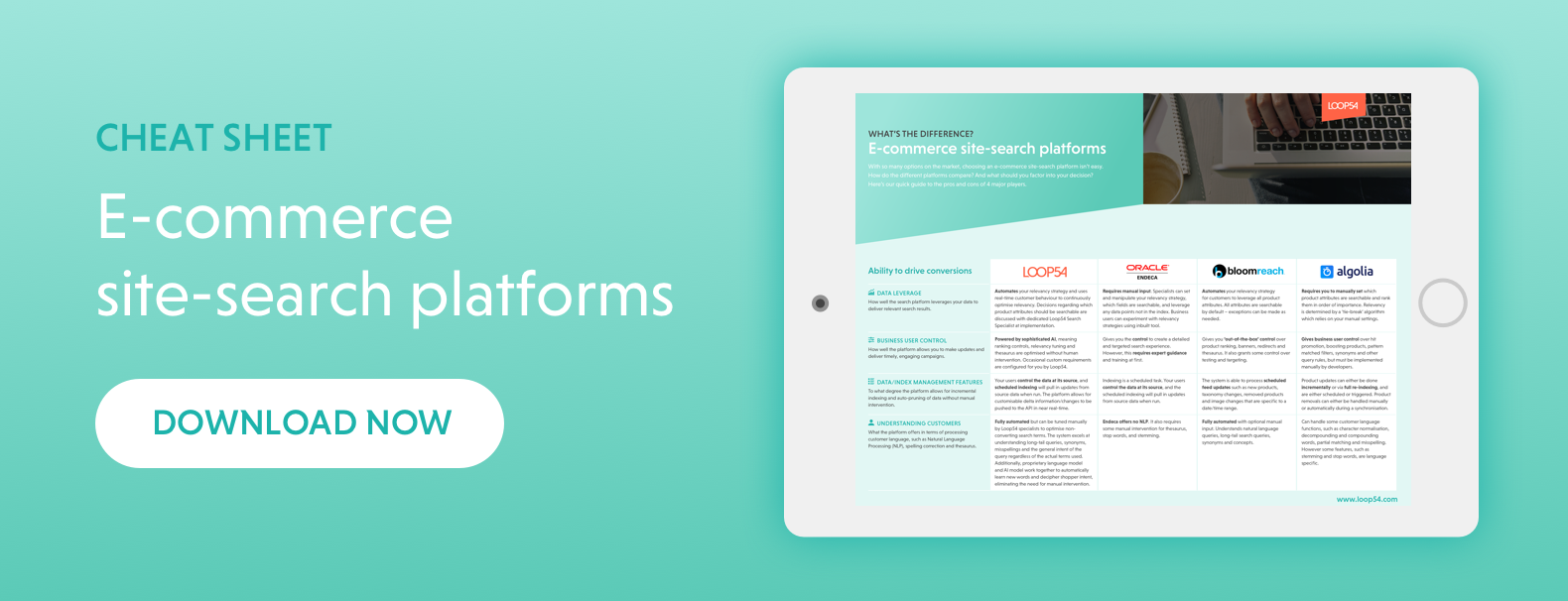If you operate an eCommerce website, setting a logical page hierarchy is perhaps your most important business decision. How you structure your content and navigation will greatly affect users’ onsite experience and how well you succeed in search engine ranking.
Always make sure you know what pages you put where – and why. Chances are that you’re going to live with your decisions for quite some time. And since re-organising a website usually requires hundreds of hours in development, set this strategy before the site launch rather than after.
Optimisation started long ago
When it comes to organising products, there’s a lot to learn from brick-and-mortar businesses. The first self-service supermarket opened 100 years ago, and they’ve been doing this for, well, years? Make sure you learn from history.
It’s not an accident that you can enter a grocery store almost anywhere in the world and find what you need right away. There’s a fruit and vegetables section, one for meat and fish, one for dairy products, one for rice and pasta and so on.
Then there are overlapping products. For instance, you’ll find crackers near the cheese, tortillas by Tex-Mex products, pretzels by the beer and lemons by the fish.
When you find yourself searching for something, it’s often a product that could fit into several sections. Are the sun-dried tomatoes among the vegetables, condiments, canned goods or in that little section with tapenades and bread sticks?
A neatly organised grocery store fills two purposes:
- Clearly divided section based on food category.
- Suggestions based on related products
The same theory is applicable online. Customers simply need to find what they came for. If you can structure the site in line with the majority’s intent, chances are that you improve user experience, conversion rates and – in the end – your profit.
Website structure – best practice for category pages
An eCommerce website is commonly structured in four levels:

The set up obviously depends on the type of business you’re operating and product portfolio. But if you want visitors to instantly understand the website we highly recommend sticking to this site hierarchy.
1. Index page
The index page should link to your main categories in the top menu – it’s like a map by the entrance to a large shop or mall. A visitor should be able to see right away where to click to find the most relevant section for him or her.
From a search-engine perspective, fewer internal links are usually better. If you link to, say, 100 pages from the index page, you’re telling Google that you have 100 pages that are somewhat equally important. However, most businesses rather have five or ten categories they want to rank for and drive traffic to. Those categories should be the ones that get a prominent place in the navigation.
2. Main categories
Main categories never need any explanation. The visitor should understand what to find in each one right away. Furthermore, most products should fit nearly in one category only. If this isn’t the case, you might want to rethink the structure.
Main categories are static and rarely change – they are simply a segmentation of your product offering.
It's also important to know the difference between a pre-filtered list of products placed high up in a website structure and actual categories.
Things like 'Sale', 'Gifts', 'Best Sellers', are not categories you should use in your catalogue data structure or your website category structure, these are pre-filtered product lists you link to in the menu of your website - which make it appear as a category to the visitor, but more importantly, signals to external search engines that these keywords are important.
Good rules to follow: each main category should have at least 30 products, and no more than 10 subcategories.
3. Subcategories
If you have a large product portfolio you usually need subcategories. To avoid getting an overly cluttered menu structure, don’t have more than ten subcategories under each main category. And the lowest subcategory level should have least 10 products.
This is also important for search engines. If you have several pages that are too similar, the search engine has trouble deciphering the most relevant page for a search query. Only create a subcategory page if it helps users and it doesn’t conflict with another page.
So, what do I gain by doing this?
For external search: The search engine can crawl your website in a structured manner. It will understand the most important categories and which subcategories are related. Instead of having information scattered over the website, you can build clusters around important topics.
For internal site-search: a good website structure should mirror the catalogue data structure. And a well organised catalogue is what's needed for a great on-site search. Just like Google uses your website structure to determine what's most important and what keywords you should rank for, so too does your internal search engine. Except rather than look at your website, it relies on your catalogue data structure (i.e. all the data behind your website - product title, brand, description, category hierarchy, etc.).
When done correctly, your on-site search will use your categorisation to improve the relevancy of search results. It can also use that categorisation to redirect users to specific category pages directly in the search autocomplete.
For example, if someone searches “Nike” on a sports retailer's site, categories such as Nike in Shoes or Nike in Sweaters can be show, but also popular products such as Nike Air Force 1 or Nike Air Max.

Topics:


